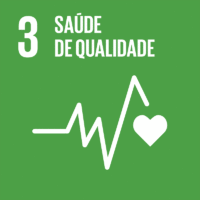Ciência_Iscte
Publicações
Descrição Detalhada da Publicação
Artigo em revista científica
Q1
Condom use beliefs differ according to regulatory focus: A mixed-methods study in Portugal and Spain
Título Revista
Journal of Sex Research
Ano (publicação definitiva)
2024
Língua
Inglês
País
Reino Unido
Mais Informação
Web of Science®
Scopus
Google Scholar
Esta publicação não está indexada no Overton
Abstract/Resumo
Reports worldwide have been showing increasing rates of sexually transmitted infections (STIs) and condomless sex in recent years. Research has identified several individual and situational variables that can determine the decision to use condoms or forgo their use. We argue that such a decision can also be shaped by motives related to pleasure and safety (i.e., regulatory focus in sexuality). Using open-ended questions, we asked 742 Portuguese and Spanish adults to indicate situations and reasons that could inform the decision-making process with casual partners and the functions/attributes related to condoms. Using thematic analyses, we coded the drivers of condomless sex and condom use into themes and subthemes, and computed their frequencies. Using quantitative measures, we also asked participants to indicate their condom use expectancies and perceived barriers. Comparing participants according to regulatory focus revealed some differences. Pleasure promotion participants were more likely to consider that condom use decision-making is driven by unexpectedness, pleasure, and intimacy pursuit, attached more pleasure reduction functions to condoms, expected more negative outcomes in condom use, and endorsed more sensation and partner barriers in condom use. In contrast, disease prevention participants were more likely to consider that condom use decision-making is driven by adequate sexual education, responsibility, and behavioral control, and attached more health-protective functions to condoms. These differences can inform the development of tailored intervention and awareness campaigns aimed at helping people to use condoms more consistently with casual partners and avoid behaviors that put them at risk of STI transmission.
Agradecimentos/Acknowledgements
--
Palavras-chave
Regulatory focus,Pleasure promotion,Disease prevention,Sexual behavior,Condoms,STI
Classificação Fields of Science and Technology
- Psicologia - Ciências Sociais
Registos de financiamentos
| Referência de financiamento | Entidade Financiadora |
|---|---|
| LCF/PR/SR20/52550001 | “La Caixa” Foundation |
| 2020.00523.CEECIND | Fundação para a Ciência e a Tecnologia |
Projetos Relacionados
Esta publicação é um output do(s) seguinte(s) projeto(s):
Dados de Investigação Relacionados
Esta publicação está associada ao(s) registo(s) de dados de investigação seguinte(s):
Contribuições para os Objetivos do Desenvolvimento Sustentável das Nações Unidas
Com o objetivo de aumentar a investigação direcionada para o cumprimento dos Objetivos do Desenvolvimento Sustentável para 2030 das Nações Unidas, é disponibilizada no Ciência_Iscte a possibilidade de associação, quando aplicável, dos artigos científicos aos Objetivos do Desenvolvimento Sustentável. Estes são os Objetivos do Desenvolvimento Sustentável identificados pelo(s) autor(es) para esta publicação. Para uma informação detalhada dos Objetivos do Desenvolvimento Sustentável, clique aqui.

 English
English




